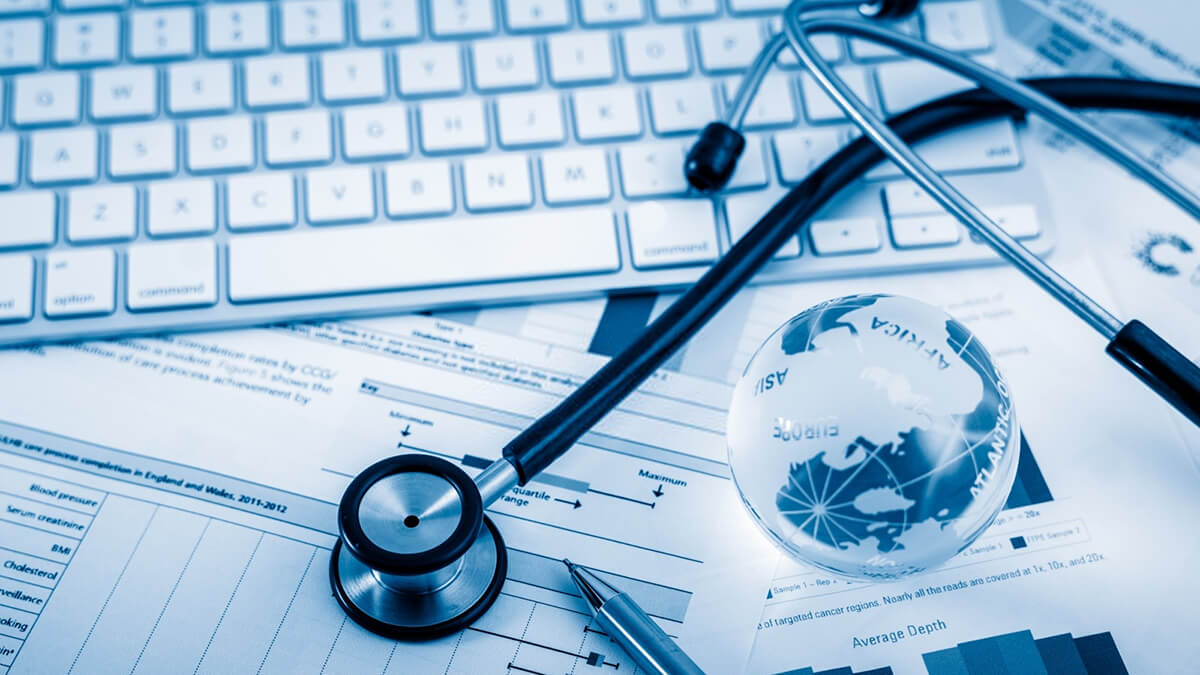Innovations in Medical Management: Just How Innovation Is Reshaping Medical Care Administration
The landscape of health care monitoring is undergoing a profound improvement, driven by technical developments in medical administration. Electronic Wellness Records (EHR) have come to be the backbone of effective individual information administration, while telemedicine bridges distances, making health care available to also the most remote locations. Expert system is not simply a futuristic principle but a contemporary device that personalizes client treatment and improves administrative jobs. As these innovations take center phase, a critical question emerges: exactly how will these technologies better redefine the healthcare experience for both carriers and people in the coming years?
Evolution of Electronic Health And Wellness Records
Over the past couple of years, the evolution of electronic health records (EHRs) has significantly transformed the landscape of medical management. Made to digitize person documents, EHRs have expanded past their original extent to end up being important devices in streamlining health care processes, boosting client treatment, and boosting management effectiveness. The transition from paper-based systems to EHRs has lowered redundancies, reduced mistakes, and helped with smooth info sharing across various doctor, thus enabling thorough and coordinated client treatment.
EHRs have presented a standard shift in healthcare management by incorporating professional, management, and financial data, thus permitting for even more informed decision-making. The accessibility of real-time patient information equips health care specialists to make prompt analysis and therapy choices, even more boosting individual end results. EHRs sustain the application of evidence-based methods by supplying accessibility to the most current clinical study and treatment guidelines directly within the scientific process.
The government incentives and regulations have sped up EHR adoption, guaranteeing compliance with requirements that guard individual personal privacy and data security. As the medical care market remains to embrace electronic change, EHRs remain at the center of innovation, driving performance and enhancing the general quality of health care delivery.
Developments in Telemedicine
Telemedicine has swiftly advanced recently, fundamentally modifying the means medical care services are supplied. This makeover is mostly credited to technical innovations that have actually broadened accessibility to treatment, specifically for individuals in remote or underserved locations. Telemedicine systems help with real-time examinations in between individuals and health care service providers, consequently lowering the need for in-person visits and dramatically decreasing wait times.
The assimilation of video clip conferencing, mobile wellness applications, and remote monitoring gadgets has actually boosted the extent of telemedicine. Patients can currently take care of chronic problems with continuous monitoring, receive timely assessments, and gain access to professional care without geographical restrictions. This change has not just better individual complete satisfaction but has additionally optimized medical care operations and source allocation.
In addition, telemedicine has actually played a vital role in public health, specifically throughout pandemics, by decreasing the risk of infectious disease transmission. Regulatory developments have additionally supported telemedicine's proliferation, with many nations changing plans to allow wider insurance coverage for virtual check outs.
In spite of challenges such as electronic proficiency and data protection, the ongoing development of telemedicine promises to sustain its trajectory as a foundation of modern-day health care administration, supplying a more obtainable and effective medical care delivery model.
Expert System in Medical Care
Structure on the technical advancements seen in telemedicine, fabricated knowledge (AI) is rapidly coming to be a transformative pressure in healthcare management. AI modern technologies provide considerable improvements in efficiency, accuracy, and decision-making capabilities. Among one of the most compelling applications of AI in medical care is predictive analytics, which allows health care administrators to anticipate person demands, enhance source allowance, and enhance person results. By assessing huge datasets, AI algorithms can identify patterns and anticipate possible health and wellness crises, enabling aggressive intervention.

An additional significant application is in tailored medication, where AI helps in tailoring therapies to private patient profiles by analyzing genetic, way of life, and ecological factors (medical administration). As AI remains to develop, its integration into health care administration guarantees to enhance operations, reduce costs, and inevitably improve the quality of care offered
Enhancing Information Safety Measures
In the digital age, guarding client details has actually come to be an important top priority in clinical management. As medical care companies progressively rely upon digital systems for handling person information, the need for robust data safety actions has actually expanded exponentially. Data breaches not only jeopardize patient personal privacy yet additionally bring about significant monetary losses and damage to institutional online reputations. The integration of sophisticated security protocols is paramount.
Health care establishments are implementing multi-layered security frameworks to reduce risks. Security innovations ensure that sensitive data remains inaccessible to unauthorized individuals, both during transmission and storage space. Moreover, the adoption of blockchain technology offers an appealing method for boosting information stability and traceability, giving an immutable document of all purchases.

Training visit the site team on cybersecurity ideal practices is just as vital. Recognition programs gear up healthcare workers with the knowledge to identify and report possible dangers, such as index phishing attempts. By focusing on information safety, clinical managements can protect person information and keep count on.
Improving Individual Communication Systems
While durable data protection measures are fundamental in shielding individual details, just as essential is the improvement of person communication systems to ensure reliable healthcare shipment. In the progressing landscape of medical care administration, technical technologies are playing a critical role in changing just how medical care suppliers communicate with patients. Effective interaction systems not just boost client satisfaction however likewise boost scientific outcomes by ensuring timely and accurate information exchange.
This combination enables patients to access their medical information firmly, timetable appointments, and interact with health care providers efficiently. Furthermore, the use of telemedicine systems has broadened access to healthcare solutions, specifically for those in remote areas or with flexibility obstacles.
Furthermore, artificial intelligence-powered chatbots are being progressively used to provide instant reactions to client inquiries, providing a seamless communication experience. By leveraging these technological developments, doctor can promote more customized patient communications, ultimately leading to boosted person interaction and adherence to therapy strategies.
Conclusion
Telemedicine boosts medical care accessibility for remote populaces, while artificial knowledge automates jobs and customizes patient involvement. Collectively, these innovations drive effectiveness, minimize prices, and elevate the quality of medical care delivery, reshaping organizational procedures in the healthcare field.